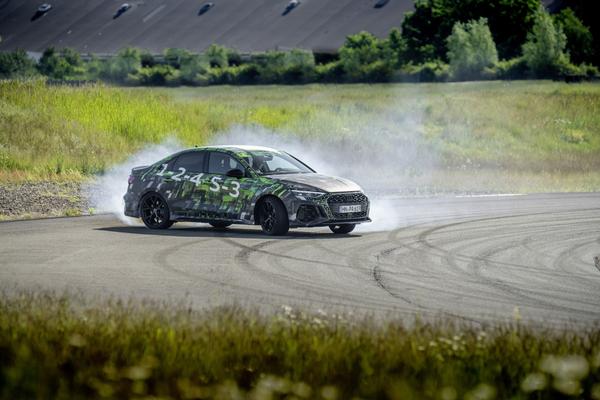Techno: the Audi RS3, Mercedes-AMG A 45 S, VW Golf R… and their Drift function
At the origin of a class of sassy compacts that are still in the news today, the Volkswagen Golf GTI painfully developed 110 hp in 1976. Some 45 years later, times have changed a lot. A diesel Dacia Duster has 115 hp… and a Mercedes-AMG A 45 S, the true headliner of the segment thanks to its 2.0 turbo 4-cylinder engine with record power, pushes the cap up to 421 hp.
If there are rare exceptions, like the brilliant Honda Civic Type R, which remain simple traction, many other bombs of this kind have, by force of circumstances, and especially their mechanics, yielded to all-wheel-drive sirens. Four-wheel drive is way better than two when it comes to getting over 300 hp to the ground.
Problem, the dynamism of behavior and thereby, driving pleasure, are regularly sacrificed on the altar of efficiency. But it was without counting on the imagination of the builders, who were determined to remedy this.
Photo: Clement Choulot

From 2016, Ford marketed a third generation of Focus RS at the wheel of which it is possible to select a new Drift mode... Since then, others have followed, and it is the turn of the next Audi RS3, already partly unveiled, to boast of such functionality.
The compact with the rings, like the vast majority of its rivals, accommodates its engine in a transverse position. Architecture which generally imposes the distribution of torque to the front wheels by default. Consequently, even in the presence of all-wheel drive (and therefore of a controlled central differential), the rear axle cannot then receive more than 50% of the energy delivered by the mechanics. Which is more than enough to guarantee excellent motor skills, but not to upset the balance, of a natural understeer in general.
In order to provide additional dynamism, even fantasy, the Ingolstadt sports car, like the A45 S and the Volkswagen Golf R recently, is less concerned with the distribution of torque between the front and the rear than between right and left.
These super GTI indeed circumvent the problem without necessarily using a central differential, but rather through a pair of controlled clutches directly located on the second axle. If in a straight line, no imbalance is desirable, the torque can nevertheless be adjusted independently on each of the rear wheels when cornering. Push a supermarket trolley with one hand placed on one side of the handle, it turns on itself... To put it simply, it's exactly the same thing in the case of sports cars equipped in this way.
Without always receiving more than 50% of the available driving force, the rear becomes somewhat directional. All the more so when in Drift mode, only one of its two wheels, the one outside the bend, sees its clutch closed, to the point of generating a yaw effect; in other words, oversteer, like propulsion.
Without being more energy-consuming or less efficient, these new-fangled compact cars are therefore more fun to drive.
More sports cars on auto-moto.com:
Mercedes-AMG CLA 45 S vs Renault Mégane RS Trophy-R: toy club
BMW M2 CS vs Porsche 718 Cayman GT4: user manuals
Hyundai i20 N test: hip hip hip Hyundai!







